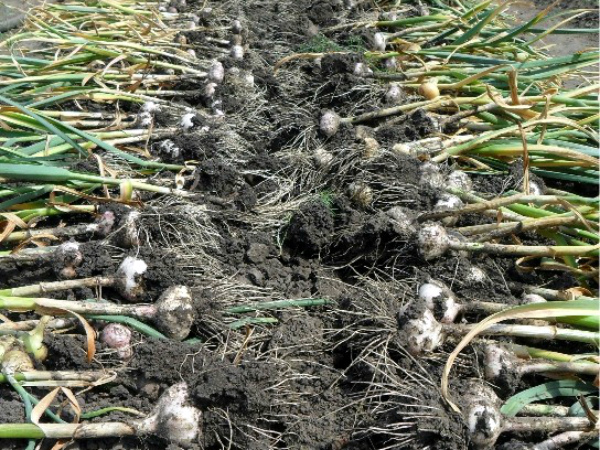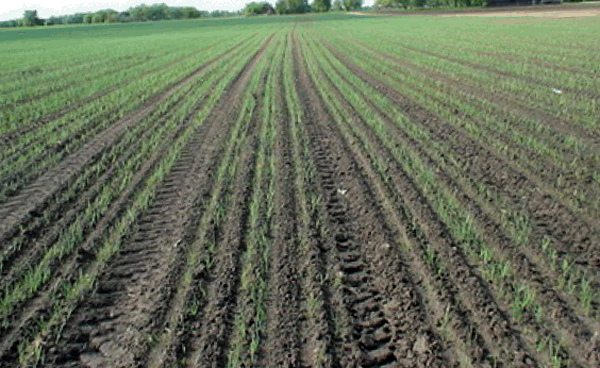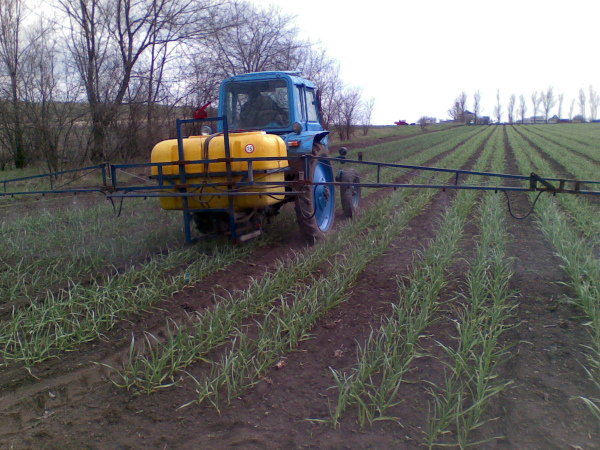What is the yield of garlic from 1 are
Content
Secrets of a rich harvest
Garlic yield is influenced by many factors that you need to know before you start cultivating a plant. First of all, it is, of course, the soil and its chemical composition. Garlic grows best in loamy soil, the acidity of which is neutral to low. The more the soil is saturated with organic and mineral fertilizers, the more crops can be harvested from 1 hectare.
The next item is the plants that grew on the selected area before. It is recommended to plant garlic after cabbage, melons (pumpkins, cucumbers, zucchini, eggplants), legumes, peas (especially Vika peas), green manure (winter wheat, mustard, etc.). During the growing season, these crops saturate the soil with micronutrients, have a positive effect on its mineral composition, and also do not deplete the soil. This is what positively affects the growth of garlic, allowing you to grow larger and healthier bulbs.
Care should be taken to plant the plant after early maturing potatoes. Despite the fact that during a short growing season, the potato does not have time to significantly deplete the soil, this can still have a depressing effect on the development of garlic.
Soil preparation
The site should be prepared in advance, at least one and a half months before planting. It is best to choose a well-lit place where moisture does not accumulate. As noted, loamy soil with neutral acidity is best suited for garlic. However, remember that any soil can be deoxidized by using slaked lime or dolomite flour.
Observe the crop rotation and do not plant it after late-ripening potatoes, turnips, carrots. Peas and beans should not be planted in areas adjacent to garlic, since they actively take all nutrients from the soil. Onions, cucumbers, carrots, and tomatoes are also added to the list of unfavorable neighbors.
It is imperative to fertilize the soil, otherwise the garlic will not be able to reveal its vegetative potential. For feeding, you can use the following mixtures:
- In 5 kg of humus add 20 g of superphosphate, 15 g of potassium salt per 1 sq. m.
- In 5 kg of manure add 30-35 g of double superphosphate in granules and 25 g of potassium salt per 1 sq. m.
- In 1 bucket of compost mix 10-15 g of superphosphate, 1 tablespoon of nitrophosphate per 1 sq. m.
When calculating the amount of fertilizers, proceed from the size of your plot (ha), choosing a more suitable option.
Fertilizer is applied in the fall, when all plant residues have already been removed from the garden, disinfection has been carried out.
Apply fertilizer while digging so that it penetrates at least one shovel bayonet. If your site has more than one hectare of area, use special machines.
Sowing
Before sowing, it is necessary to disassemble the heads into separate cloves, calibrate, choosing only the largest ones (of which large heads grow), and then disinfect.You can use the herbicide "Totril", which not only increases the immunity of the plant, but also prevents the growth of weeds.
The sowing date varies depending on the variety of garlic and your climate, but in general, winter varieties can be planted from early September.
In the selected area, mark furrows 20-25 centimeters deep, cover the bottom of which with a layer of clean river sand and ash. This will help keep the sprouting garlic cloves from rotting during rains or melting snow. Place the seed on the bottom of the beds, keeping a distance of 10-12 cm between them. There should be about 20 cm of free space between the beds so that the root system, which is quite developed in garlic, does not intertwine with each other. Moisten furrows before covering them with soil. Upon completion of planting, be sure to mulch the beds with leaves, straw, needles or sawdust to avoid rapid evaporation of moisture.
Care
How long does garlic grow? The approximate dates of the end of the growing season can be obtained from the manufacturer, since they differ for each variety. Moreover, the ripening period is different in different regions of Russia.
As it grows, garlic needs regular watering about once every 10 days. However, if the season is dry, the beds need to be watered more often. After each watering, the soil should be loosened.
You can also carry out top dressing. How much you need depends on the composition of the soil and weather conditions in your area. Usually, liquid mullein is used in the first growing season, when the garlic only grows green mass. As an irrigation, yeast solution is often used, which, in addition to saturating the soil with nutrients, increases the plant's immunity against fungal diseases.
For preventive purposes, it is necessary to treat the area with fungicides, as well as anti-insect preparations, for example, "Kruiser", "Fastak".
Maximum yield from 1 are
So, what kind of harvest can you get from 1 are? It depends, first of all, on the selected variety.
The variety "Lyubasha" bred in Ukraine has proven itself well. If all growth conditions are met, it gives a yield of about 35 tons per hectare, that is, about 350 kg per one hundred square meters. Moreover, the weight of one head ranges from 80 to 120 g.
Another variety that will help you grow a good harvest is Ukrainian White (and its variety Ukrainian Purple). Subject to the agrotechnical conditions of cultivation from 1 hectare, you can get 15-20 tons (about 150-170 kg from 1 are). The weight of one head of garlic in this variety ranges from 60 to 140 g.
"Spas" is a productive winter variety, which gives up to 20 tons of garlic from 1 hectare (about 200 kg from 1 are) with a weight of one bulb up to 100 g. Plus this variety has increased immunity against stem nematode damage and fusarium.
Smaller bulbs in the "Violet Kharkovsky" variety, their weight is up to 60 g. Moreover, from 1 hectare you can get about 11 tons (about 100 kg from 1 hundred parts). Despite its small bulbs, the cultivar is resistant to many diseases.
For the territory of Russia, the Romanian variety "Benefis" is suitable. Its distinctive features are increased frost resistance, abundant harvest, stable immunity to various diseases. Bulbs grow in weight up to 170 g, and from one-toothed bulbs up to 240 g can be grown. Moreover, from 1 hectare, you can get about 35-45 tons of harvest (350-400 kg from 1 are).
You should also consider the soil. Even planting 10 hectares of a plot with infertile soil with selected seed material, you will not get the above yields. Thus, in order to obtain the maximum yield from each hectare, all the nuances of agricultural technology should be taken into account.
Video "Garlic without diseases and pests"
This video is about the features of growing a good harvest of healthy garlic, about the prevention and treatment of crop diseases.





